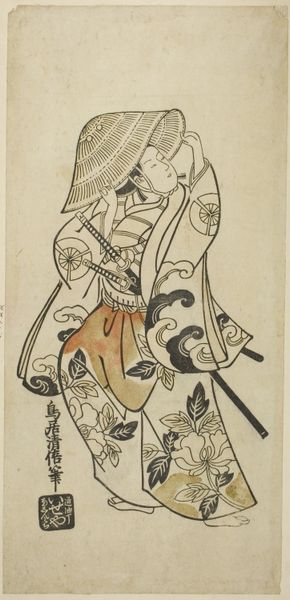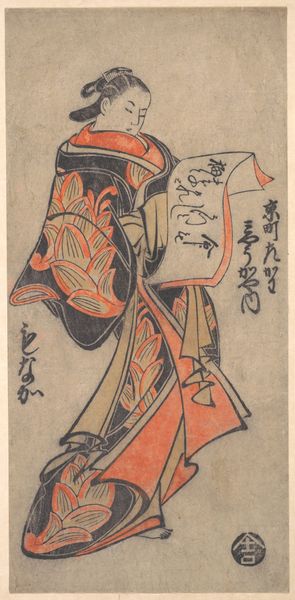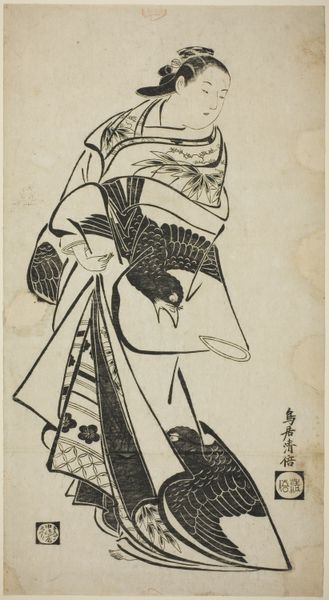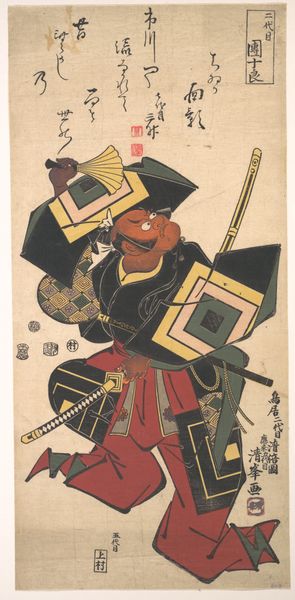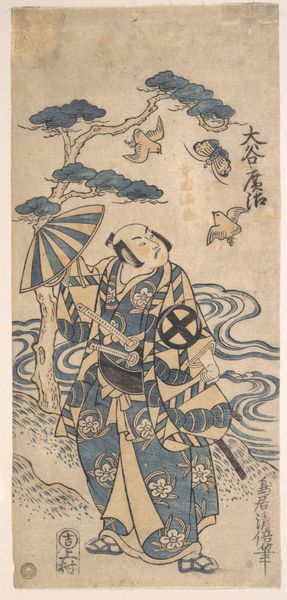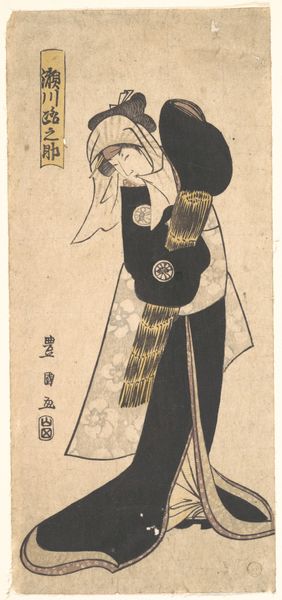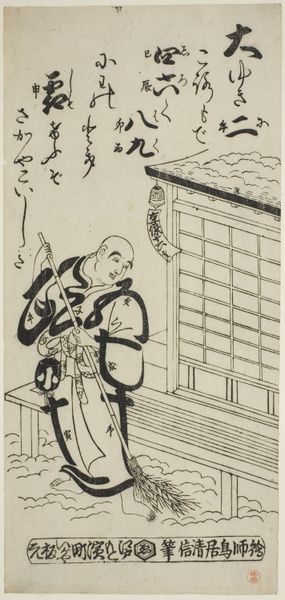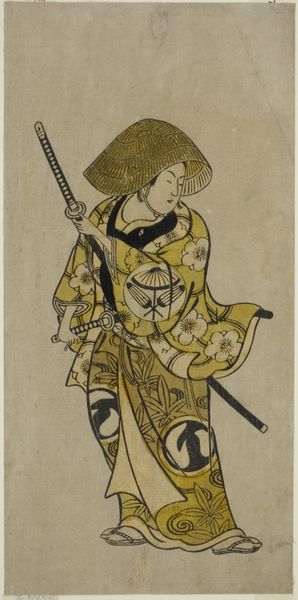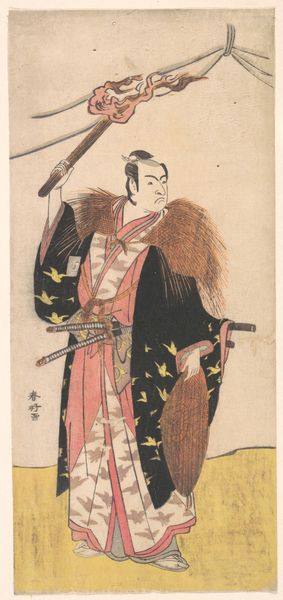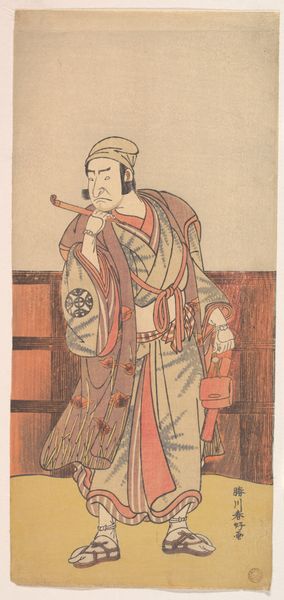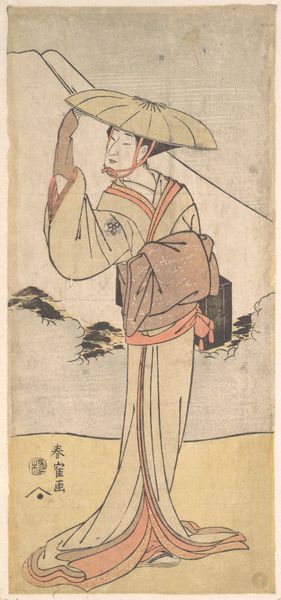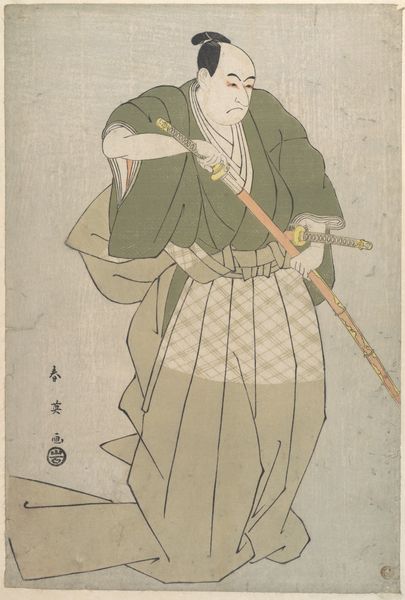
print, ink, woodcut
# print
#
caricature
#
asian-art
#
caricature
#
ukiyo-e
#
figuration
#
ink
#
woodcut
Dimensions: height 183 mm, width 430 mm
Copyright: Rijks Museum: Open Domain
Curator: Ah, this Otsu-e print titled "Toneelspeler," created sometime between 1700 and 1730, is an interesting piece to discuss. Ukiyo-e woodcuts, like this, often reflected popular culture and served as souvenirs or talismans. What strikes you initially about this caricature? Editor: The gestural lines and minimal color palette give it an immediate, graphic impact. It feels dynamic, almost caught mid-performance. I’m drawn to the figure's exaggerated facial features. Curator: The production of these Otsu-e was very often a communal affair. Consider that many were made by anonymous craftspeople for sale to travelers. This one, attributed to Otsu Matahei, might suggest a connection to more formally recognized artistry. Notice the bold ink work and what appears to be some stylized calligraphy at the top, it really plays into that popular art appeal. Editor: Absolutely. The composition directs my gaze. The character dominates the space, but I notice that he has two swords but does not wear the attire of a Samurai. Instead, this figure almost seems comical; his muscular, marked legs give a unique visual weight to his figure. I wonder what those marks all over his legs are? Curator: Those are painted markings that suggest tattoos or body paint, emphasizing the theatrical role and possibly hinting at marginal social standing. Remember, ukiyo-e often engaged with everyday life and sometimes with critiques of the social order. The physicality you pointed out really grounds that connection. Editor: And it's the tension between the grounded realism of the body and the more abstract, calligraphic elements above that give the work a distinctive visual energy. He's an individual rendered with both immediacy and a level of stylization that elevates him. Curator: It truly captures how a readily accessible medium, like woodcut printing, could express both personal and broader social themes. I find it fascinating how utilitarian art forms often provide complex social narratives. Editor: And I'm equally captivated by how the artist manipulates basic formal elements to create a lasting impression and to hint at narratives lurking beneath the surface. Thanks for offering a bit more insight into how prints like these would function, I had only examined it for its own graphic and gestural characteristics.
Comments
No comments
Be the first to comment and join the conversation on the ultimate creative platform.
